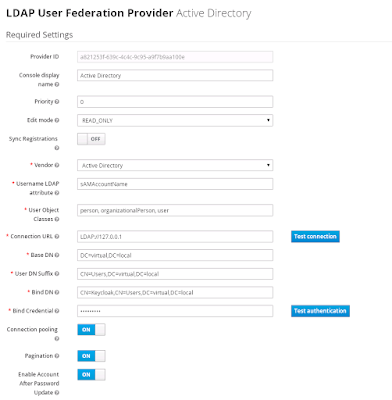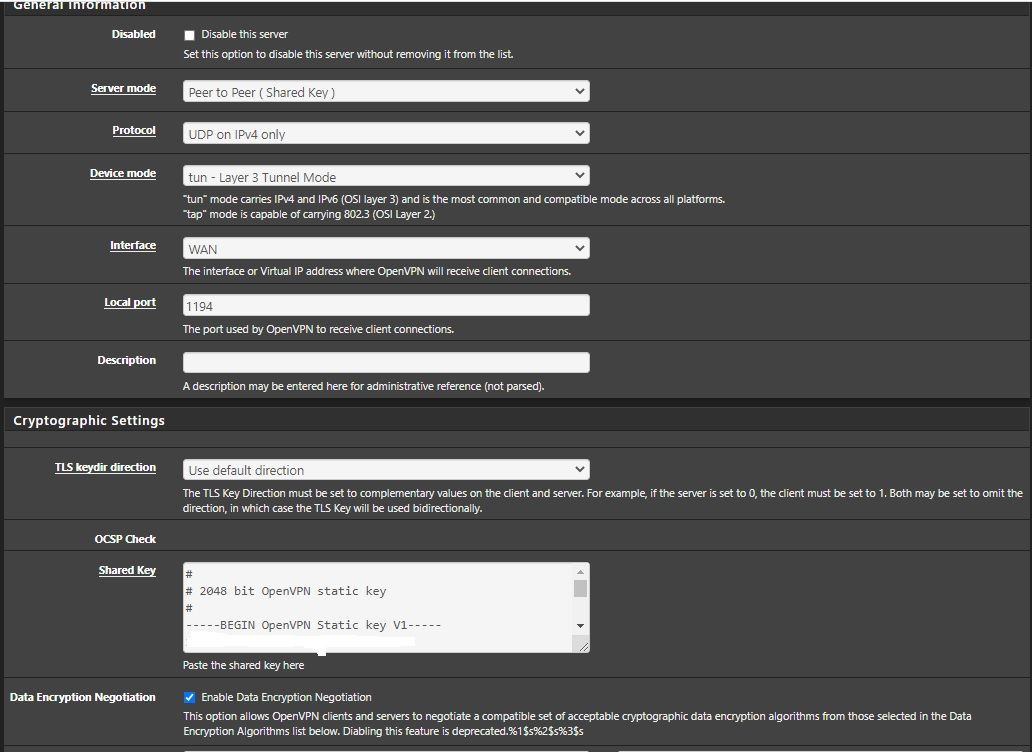Table of Contents
PC running slow?
Here are some simple methods that should help you solve encryption problem with Openvpn Authentication / Decryption packet error that ultimately failed.
Fix OpenVPN “Packet Authentication / Decryption Error: Encryption Failed”
PC running slow?
ASR Pro is the ultimate solution for your PC repair needs! Not only does it swiftly and safely diagnose and repair various Windows issues, but it also increases system performance, optimizes memory, improves security and fine tunes your PC for maximum reliability. So why wait? Get started today!

I always got someone’s error when connecting to VPN
I imported the ovpn information provided and followed all the other steps on the system, so it was pretty frustrating. Then I saw in the logs:
8 Mar 09:31:07 openvpn [1790]: WARNING: ‘Cipher’ is inconsistently implemented, local = ‘cipher BF-CBC’, remote = ‘cipher AES-256-CBC’
Changing my client to use “Cipher AES-256-CBC” instead of backlog (which appeared to be BF-CBC encryption) fixes a specific issue.
Popular Articles On This Blog
Duplicate document diagnostics is becoming increasingly important for businesses with huge collections of emails, web sheets, and multiple copies of documents that may or may not be updated. MinHash is a very simple algorithm that is very poorly explained in the content of all my searches on Google or in a mathematical language that I forgot a long time ago. In connection with this article, I will try to explain in non-professional language like MinHash works on a practical level. Take a look at http://infolab.stanford.edu/~ullman/mmds/ch3.pdf before you start. This document contains many standards and ultimately became the starting point for my understanding of MinHash. Unfortunately, it fits your algorithm from a theoretical point of view, but if you find that I am hiding some aspects of this MinHash algorithm here, you will almost certainly find a more detailed explanation in the PDF file. I will also use pseudo Java in these examples instead of all the math. That is, when I use jargon as a set, I mean our own group
The following shows how to configure Keycloak with Windows AD to use Kerberos authentication. Assumptions, the Kerberos realm is VIRTUAL.LOCAL. The hostname used to access Keycloak will most likely be virtual.local. It simply means that we are running Keycloak on the domain of the controller. During processing, virtual.local will be replaced with keycloak.dev.virtual.local or something similar, which will give you the SPN HTTP/[email protected] Configuration Create a Windows domain name account called Keycloak. Run the following command toassign SPNs to these users and generate a keytab file: ktpass -out keycloak.keytab -princ HTTP/[email protected] -mapUser [email protected] -move past password1! -kvno 0 -ptype KRB5_NT_PRINCIPAL -crypto RC4-HMAC-NT Verify that the SPN has been selected for the user using the following command: setspn -l Keycloak Configure the LDAP configurations in Keycloak as follows. Since we are currently running Keycloak on a domain controller, we can refer to
# What TCP / UDP port should OpenVPN listen on?
# If you want to run multiple instances of OpenVPN
# on the same computer via a different port
# Number for each body. You should
# open this port in your firewall.
Port 1194
# “dev tun” creates a routed IP tunnel,
# “dev tap” creates an ethernet tunnel.
# Use “dev tap0” if you are using an Ethernet bridge
# and pre-designed the exclusive tap0 user interface
# has connected your awesome ethernet interface.
# If you want to manage access policies
# in VPN you must connect to a firewall with rules
# for TUN / TAP interface.
# On non-Windows systems, you can
# a useful explicit number like do0.
# Use this.On
for “dev-node” on Windows# fast systems, VPN not working
# unless you have partially or completely disabled
# firewall software for the TUN / TAP interface.
# SSL / TLS root records (ca), certificate
# (certificate) and private (key). Every client
# and the server must have its own certificate and
# Keys storage. The waiter and all satisfied customers will# Use the CA file in the same way. See
#
# that this directory “easy-rsa” is for the
seriesNumber of scripts to generate RSA certificates
# and personal kys. Remember
. use# unique common name for
server# and each is connected to client certificates.
#
# Any X509 key consolidation system can be used.
# OpenVPN can also use PKCS # 12 file
# vital (see the “pkcs12” directive on the man page).
ca /etc/openvpn/ca.crt
certificate /etc/openvpn/server.crt
key /etc/openvpn/server.key # This file should always be kept secret
# Diffie-Hellman settings.
# Build yours with:
# openssl dhparam -out dh2048.pem 2048
those. dh2048.pem

# Network topology
# Should be (addressing p dnets over IP)
# may have Windows clients v2.0.9 and less
# supported automatically (then net30, i.e. a / 30 depending on client)
# Net30 by default (not recommended)
; subnet topology
# Configure server and specify VPN subnet mode
# for OpenVPN to protect against client attacks.
# Server will take 10.8.0.1 out of itself,
# The rest is provided to clients.
# Each client will have the opportunity to contact the
serverNo. dated 08.10.01. Comment this line if you are
# Connect Ethernet. See the man page for more information.
Server 10.8.0.0 255.255.255.0
# If enabled, this instruction is configured
# all clients should redirect their default
# Network gateway to VPN that makes
# all IP traffic such as surfing the internet and
# and DNS lookup in VPN
# (OpenVPN server needs NAT
# or connect the TUN / TAP interface to the Internet
# to make sure it works correctly).
click “redirect-gateway def1 bypass-dhcp”
# Uncomment this ad to allow others
# satisfied customers so they can “see” each other.
# DefaultClients see only the host.
# For clients to see only the server, you must
# should make the firewall work well
# TUN / TAP server interface.
Client to Client
# The keepalive directive calls the ping-type
# Messages to send over and over
# relationship so that each side knows when
# I’d say the other side crashed.
# Ping for 10 seconds, suppose remote
# Peer can be described as not receiving echo request for
# the corresponding period is 120 seconds.
Keepalive 10 120
# For added security beyond the provided security
# Create a “HMAC firewall” over SSL / TLS
# to support DoS attacks and UDP port flooding.
#
# Create with:
# openvpn –secret –genkey ta.key
#
# The server and each client must have a
# a copy of this key.
# Client parameter must be “0”
# on the system and on clients “1”.
tls-auth /etc/openvpn/ta.key 6 # This file is secret
# Decision regarding cryptographic encryption.
# This config item must be larger
# Make a good copy of the client config file Once.
# Note that v2.4 client / server automatically
# negotiate AES-256-GCM in TLS mode. See
# also the ncp-cipher parameter on the
man pageAES-256-CBC encryption
# For compression compatible with old clients add comp-lzo
# If you activate it here, the person must also
Include # in your user config file.
comp-lzo
# Persistent parameters are checked to prevent this
# Access to specific resources on which it will be restarted
# might be useless because
# downgrade privileges.
permanent key
do persistently
# Output of the short-term report file with the current display
# Connections, cut
# and just rewrites every minute.
Openvpn-status.log status

# Set the applicable logging level
# File detail.
#
# 0 will be silent except for critical errors
# 4 is really useful for general use
# 5 with a half dozen can help fix connectivity issues
# the stay is described in great detail
Verb 6
# Notify buyer of reloadserver startup so it can
# can automatically reconnect.
explicit-exit-notice 1
Quais São Os Motivos Exatos Para O Erro De Pacote De Autenticação / Descriptografia Openvpn E Como Corrigi-lo?
Quali Sono I Diversi Motivi Per Cui L’autenticazione/decrittografia Di Openvpn Fallisce In Modo Permanente E Come Risolverlo?
Wat Zijn Uw Huidige Redenen Voor Openvpn-authenticatie / Decodering Permanent Niet Mogelijk Pakketfout En Hoe Dit Te Verhelpen?
Что по-прежнему является причиной постоянной ошибки пакета аутентификации / дешифрования Openvpn и как ее улучшить?
Jakie Są Korzyści Z Trwałego Błędu Zestawu Uwierzytelniania/odszyfrowywania Openvpn I Jak Go Naprawić?
Was Sind Die Gründe Für Die Openvpn-Authentifizierung / Das Verständnis Eines Dauerhaft Fehlgeschlagenen Paketfehlers Und Wie Sollte Man Ihn Wirklich Starten?
Vad Verkar Vara Orsakerna Till Openvpn-autentisering/förståelse Av Ett Permanent Misslyckat Paketfel Och Hur Man Anpassar Det?
¿Cuáles Son Todas Las Razones Por Las Que La Autenticación / Descifrado De Openvpn No Llega Permanentemente Al Error Del Paquete Y Cómo Solucionarlo?
Openvpn 인증/복호화가 하루 종일 실패하는 패키지 오류의 원인과 해결 방법은 무엇인가요?
Quels Sont Les Points Pour L’erreur D’offre D’authentification/déchiffrement Openvpn Et Comment Y Remédier ?